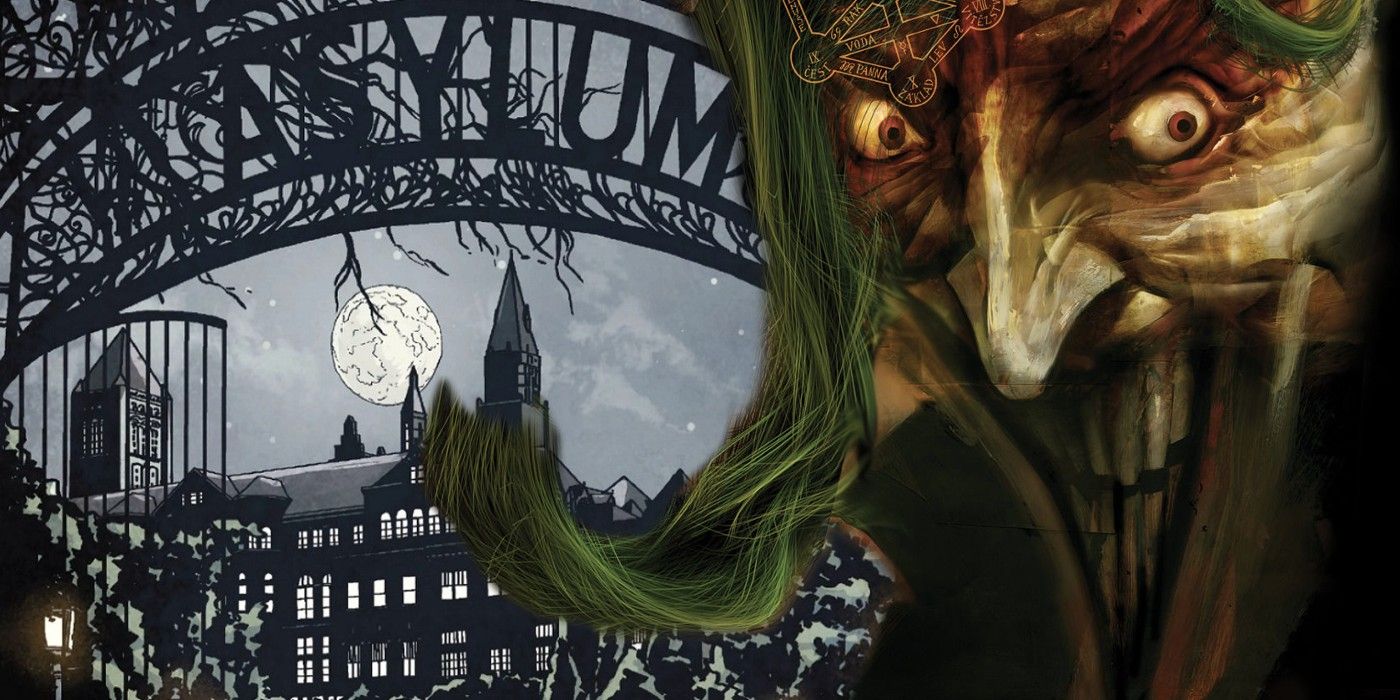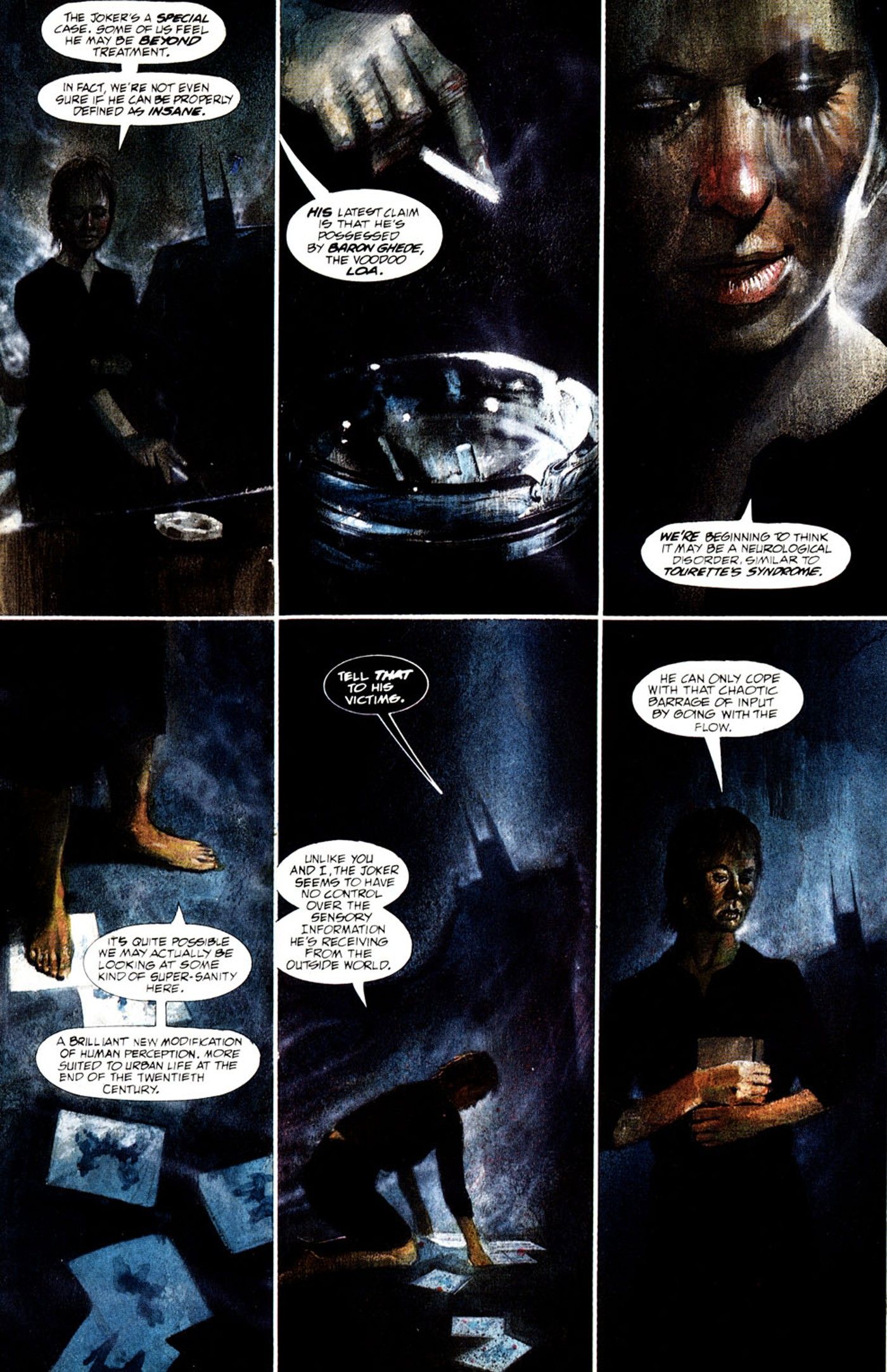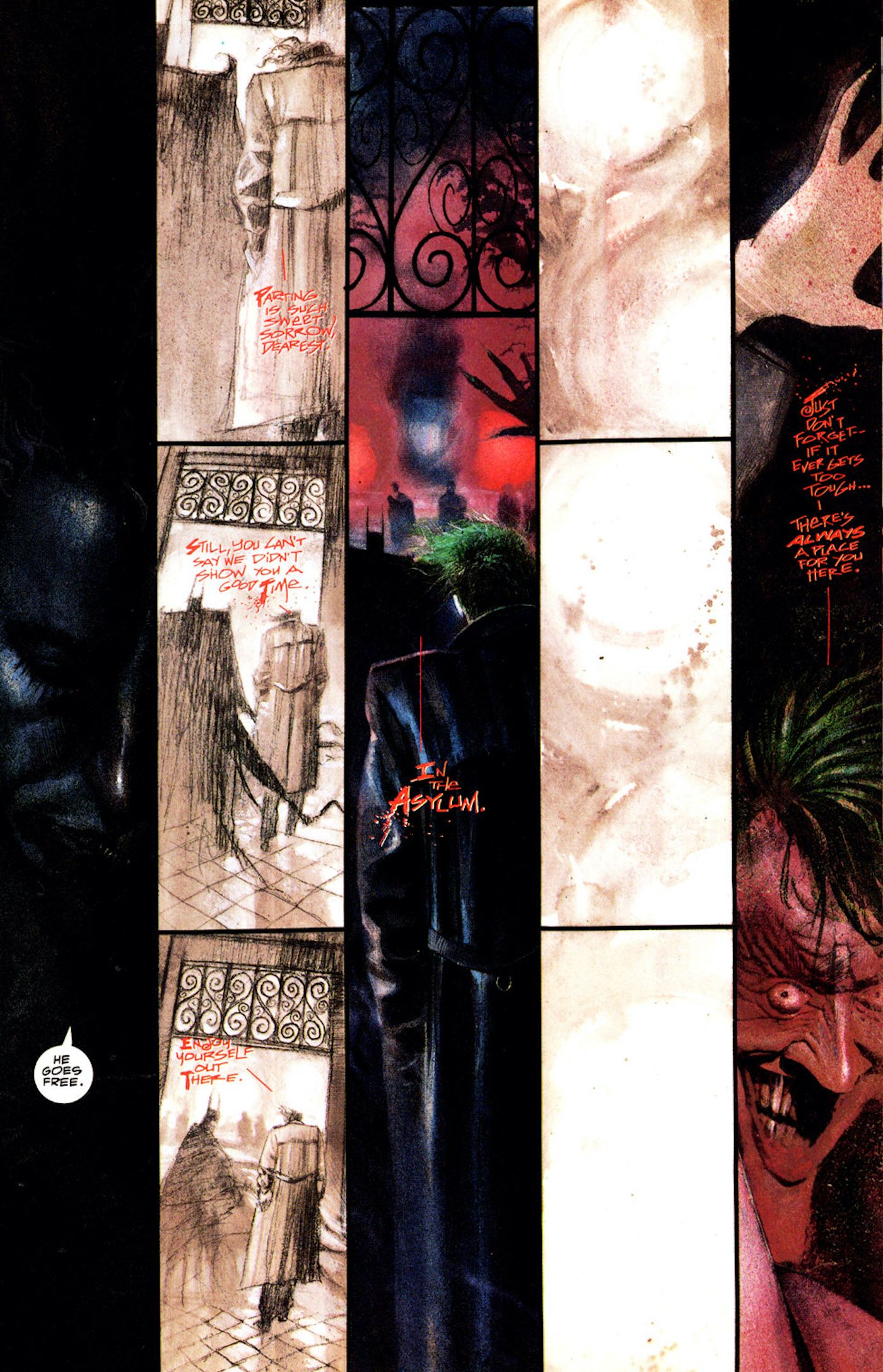Fans often assume that the infamous Arkham Asylum is a madhouse that barely contains Gotham’s worst villains, but the Joker reveals its true purpose to Batman in one of the best-selling graphic novels of all time.
Batman’s villains have iconic motifs that often come in the forms of obsessions, each designed to provide a unique challenge. The list is endless, but noteworthy examples include: Two-Face challenges Batman’s duality, Riddler challenges Batman’s intelligence, Catwoman challenges Batman’s emotions, Scarecrow challenges Batman’s fears, etc. Each villain is pitted against a specific facet of his character, but the Joker is antithetical to Batman’s entire being. The Joker is an incarnation of chaos that disrupts Batman’s desire for order. In one very famous story, the Joker invites Batman to the other side and shows him what he’s been missing. The Joker imprisons Batman in Arkham Asylum on April Fool’s Day in a misguided attempt to set him free.
In the graphic novel Arkham Asylum: A Serious House On Serious Earth, written by Grant Morrison and illustrated by Dave McKean, the inmates have taken over the asylum. The Joker makes a single demand: he wants Batman. The story directly explores the relationship between Batman and his rogues' gallery. Morrison takes this opportunity to build new layers of literality on existing iterations of Batman’s villains including giving Maxie Zeus electricity powers, making Killer Croc more reptilian, and showing Mad Hatter’s obsession with Alice in Wonderland. A discussion between Batman and Dr. Ruth Adams, a therapist in Arkham, reveals Joker’s new layer in the form of an unofficial diagnosis: “super sanity.”
Arkham Asylum Proves Joker Isn’t Actually Insane
According to Dr. Adams, the Joker doesn’t have a core personality. Instead, he uses heightened sensory perception to adapt his psyche on a whim. As far as the Joker is concerned, life is literally a meaningless joke. Batman may disagree with Dr. Adams but she proves her merits with an innovative treatment for Two-Face. She manages to reduce Harvey Dent’s compulsive symptoms by upgrading his decision-making capabilities from the simple flip of a coin to the shuffling of tarot cards and the rolling of dice. The concept of Joker’s “super sanity” is revisited in Batman #663, written by Grant Morrison and illustrated by John Van Fleet, as an explanation for his inconsistent characterization. Morrison proposes that Joker emerges with an altered personality whenever he escapes confinement, spanning from prankish comedian to murderous psychopath.
Arkham Asylum Is The Joker’s Sanctuary For Batman
Morrison reveals the secret meaning behind Arkham with the story’s subtitle “A Serious House on Serious Earth,” which originated from Philip Larkin’s poem Church Going. The poem centers around the argument that churches provide a meeting place where all the compulsions of human existence can be recognized and celebrated. Arkham Asylum is a location where norms are abandoned and all forms of thought are embraced, where characters can become fully realized. Joker’s dialogue uses red lettering reminiscent of biblical scriptures that highlight words spoken by Jesus with red letters. Arkham Asylum: A Serious House On Serious Earth isn’t a story about imprisonment, it’s a story of perverse love in which Joker shares his gospel and offers Batman sanctuary.



